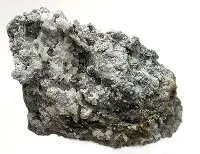Global – More companies will turn towards rare earth recycling this year instead of relying on newly mined material, believes green consultant Dallas Kachan. He says recycling is ‘gaining momentum quietly’ and is set to accelerate in light of the increasing costs of mining and overrunning projects at key sites.
Kachan, ceo of ‘clean tech’ analysis and advisory firm Kachan & Co, defines the sector – synonymous to many people with ‘green tech’ – as new technology or related business models designed to provide solutions to global climate, resource or energy challenges. The rare earth industry has been focused on new mines to meet growing demand, Kachan notes.
However, ‘fortunes will not be made’ this year by miners of rare earth elements (REEs), with alternative materials being developed to reduce dependence on them. Only large-scale applications such as wind farms, which require some two tonnes per turbine, are expected to drive the need for new mines. Kachan predicts that new processes at existing mines will improve rare earth yields.
‘Near future trends’
He believes that recycling is ‘perhaps the best route forward’ for elements where demand is likely to level off in the long term. Demand for terbium and europium, for example, will fade as fluorescent bulbs are replaced by much smaller LEDs. ‘Also, watch for a near-future trend encouraging electronics manufacturers to design their products to be easier to break apart for rare earth element recovery in the first place,’ Kachan states.
By recovering metals like tellurium from roughly 350 000 tonnes of e-scrap every year, Belgian recycler Umicore is ‘at the forefront’ of critical metals recycling, he adds. Other big players have been following suit; just last year carmaker Honda joined forces with Japan Metals & Chemicals and managed to recover up to 80% of REEs from used nickel-metal hydride batteries.
Meanwhile the US Department of Energy launched the Critical Materials Institute last September. The organisation was granted a budget of US$ 120 million, with one initial aim being to develop new technology for melting old magnets in liquid magnesium to tease out rare earths.
Global stakes
Global production of REEs was around 133 600 tonnes in 2010. Current demand is estimated at 136 000 tonnes per year, which the Industrial Minerals Company of Australia thinks could rise to 160 000 tonnes by 2016. The Chinese Rare Earth Industry Association says China produced 93 800 tonnes in 2013, a figure it expects will increase to 130 000 tonnes by next year.
The association estimates global demand for REEs could be as high as 210 000 tonnes by 2016, which would require an output of between 30 000 to 80 000 tonnes from countries other than China.
For more information, visit: www.kachan.com
Don't hesitate to contact us to share your input and ideas. Subscribe to the magazine or (free) newsletter.



